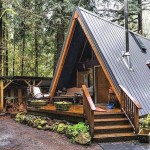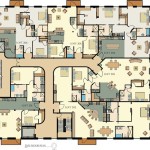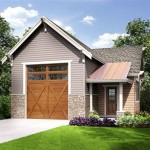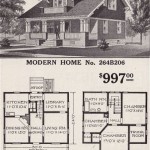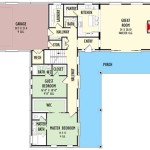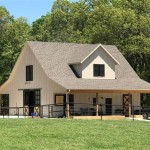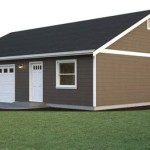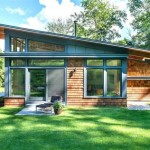House Plans With Huge Great Rooms: Expanding Living Space and Lifestyle
The architectural landscape of modern homes is increasingly defined by open-concept living. Central to this trend is the great room, a spacious, multi-functional area that serves as the heart of the home. House plans featuring huge great rooms are gaining prominence for their ability to accommodate diverse activities and foster a sense of connection among family members and guests. These expansive spaces are not merely larger living rooms; they represent a deliberate design choice to prioritize shared experiences and flexible living.
Understanding the appeal and implementation of house plans with huge great rooms requires exploring several key aspects. These include the advantages of such designs, the considerations involved in their construction and layout, and the various design elements that contribute to their functionality and aesthetic appeal. Furthermore, analyzing the impact of these spaces on the overall flow and character of a home is essential for making informed decisions about incorporating them into a building plan.
The Allure of the Expansive Great Room
The primary driver behind the popularity of house plans with huge great rooms is their versatility. This single, large space can seamlessly integrate living, dining, and entertainment functions, eliminating the need for separate, smaller rooms. This adaptability is particularly appealing to families with diverse needs and lifestyles. A huge great room can accommodate large gatherings, provide ample space for children to play, or serve as a comfortable area for relaxation and entertainment. Additionally, the open layout promotes interaction and communication among family members, fostering a sense of togetherness. The absence of dividing walls creates a more inclusive environment, where individuals can participate in different activities while remaining connected.
Another significant advantage is the enhanced natural light and ventilation that are often associated with large, open spaces. Strategically placed windows and skylights can flood the great room with natural light, creating a brighter and more inviting atmosphere. The open floor plan also allows for better air circulation, contributing to a healthier and more comfortable living environment. This increased natural light and ventilation can also reduce the need for artificial lighting and climate control, resulting in energy savings.
From a design perspective, a huge great room offers a blank canvas for homeowners to express their personal style and preferences. The expansive space allows for greater flexibility in furniture arrangement and decor, enabling homeowners to create a customized living environment that reflects their unique tastes. Whether it's a modern minimalist aesthetic or a cozy traditional style, the great room can be tailored to suit a variety of design sensibilities. The size of the space also allows for the incorporation of statement pieces, such as large-scale artwork, custom-built shelving, or unique lighting fixtures, that can further enhance the character and visual appeal of the room.
Construction and Layout Considerations
While the benefits of a huge great room are undeniable, careful planning and consideration are essential during the design and construction phases. Structural support is a critical factor, as the absence of interior walls requires alternative methods of load bearing. This often involves the use of beams, columns, or other structural elements to ensure the stability and integrity of the building. Consulting with a structural engineer is crucial to determine the appropriate support system for the specific dimensions and design of the great room.
Acoustics are another important consideration. In large, open spaces, sound can travel easily and create echoing or reverberation. This can be particularly problematic in areas where entertainment systems are used or where multiple conversations are taking place simultaneously. To mitigate these issues, incorporating sound-absorbing materials such as carpets, curtains, upholstered furniture, and acoustic panels is recommended. These materials can help to dampen sound waves and reduce the overall noise level in the room. Thoughtful placement of these materials can create a more comfortable and acoustically balanced environment.
Zoning and functionality are also key aspects of layout planning. While the great room is designed to be an open and interconnected space, it is still important to define distinct zones for different activities. This can be achieved through the use of furniture arrangements, area rugs, lighting, and subtle changes in floor level. For example, a seating area with a sofa and chairs can be designated for relaxation and conversation, while a dining table and chairs can define the dining area. Similarly, a kitchen island or breakfast bar can serve as a natural divider between the kitchen and the living areas. Carefully considering the flow of traffic and the intended use of each zone will ensure that the great room is both functional and aesthetically pleasing.
Design Elements for Functionality and Aesthetics
Several design elements can significantly enhance the functionality and aesthetic appeal of a huge great room. First and foremost is the selection of appropriate lighting. A combination of ambient, task, and accent lighting is essential to create a well-lit and versatile space. Ambient lighting, such as recessed lighting or chandeliers, provides overall illumination for the room. Task lighting, such as reading lamps or under-cabinet lighting, provides focused light for specific activities. Accent lighting, such as spotlights or wall sconces, highlights architectural features or artwork. By layering these different types of lighting, homeowners can create a visually interesting and functional lighting scheme that suits their needs.
The choice of flooring materials can also have a significant impact on the overall look and feel of the great room. Hardwood floors are a popular choice for their durability, warmth, and aesthetic appeal. They can be paired with area rugs to define different zones and add visual interest. Tile floors are another option, particularly in areas that are prone to spills or moisture. Carpeted areas can provide a soft and comfortable surface for relaxation and play. The selection of flooring materials should be based on both functional and aesthetic considerations, taking into account the overall style of the home and the intended use of the great room.
Finally, the incorporation of natural elements can help to create a connection to the outdoors and enhance the sense of spaciousness in the great room. Large windows and sliding doors can provide panoramic views of the surrounding landscape and allow natural light to flood the space. Indoor plants can add a touch of greenery and freshness to the room. Natural materials, such as wood, stone, and bamboo, can be used in the construction and decor to further enhance the connection to nature. By incorporating these elements, homeowners can create a great room that is both visually appealing and conducive to relaxation and well-being.
Integrating storage solutions is also paramount in maintaining the tidiness and functionality of a large great room. Thoughtfully designed built-in cabinetry, shelving units, and media consoles can provide ample storage space for books, electronics, toys, and other belongings. These storage solutions should be seamlessly integrated into the overall design of the room to avoid clutter and maintain a clean and organized aesthetic. Additionally, furniture pieces with built-in storage, such as ottomans with hidden compartments or coffee tables with drawers, can provide additional storage options without sacrificing style or comfort.
The fireplace often serves as a focal point in the great room, providing warmth, ambiance, and visual interest. The design of the fireplace should complement the overall style of the room and can be customized to suit individual preferences. A traditional masonry fireplace can create a cozy and rustic atmosphere, while a modern gas fireplace can offer a sleek and contemporary look. The fireplace surround can be constructed from a variety of materials, such as stone, brick, wood, or tile, to further enhance its visual appeal. The placement of the fireplace should be carefully considered, taking into account the overall layout of the room and the desired focal point.
The color palette significantly influences the ambiance of the great room. Lighter, neutral colors tend to make the space feel larger and more airy, while darker colors create a warmer, more intimate atmosphere. The choice of colors should be based on the desired mood and the overall style of the home. Accent colors can be used to add pops of visual interest and to define different zones within the room. The use of textures, such as woven fabrics, natural stone, and exposed brick, can also add depth and dimension to the color palette.

Pin On Floor Plans

Large Luxury Home Plans With S Houseplans Blog Com

Craftsman Ranch House Plan With Large Game Room 135000gra Architectural Designs Plans

Craftsman Style House Plans Big And Small Houseplans Blog Com

Large 6 Bedroom Bungalow 10000 Sf One Y Dream House Plans Designs Floor

10 Great Room Floor Plans With Amazing Photos The House Designers

One Story Farmhouse Plan With Vaulted Great Room And Master Suite 1897 Sq Ft 70647mk Architectural Designs House Plans

Tips For Selecting The Right Floor Plan Your Home Sater Design Collection

3 Bedrm 2129 Sq Ft Country House Plan 153 1464

Craftsman Home Plan With Vaulted Great Room 60631nd Architectural Designs House Plans

